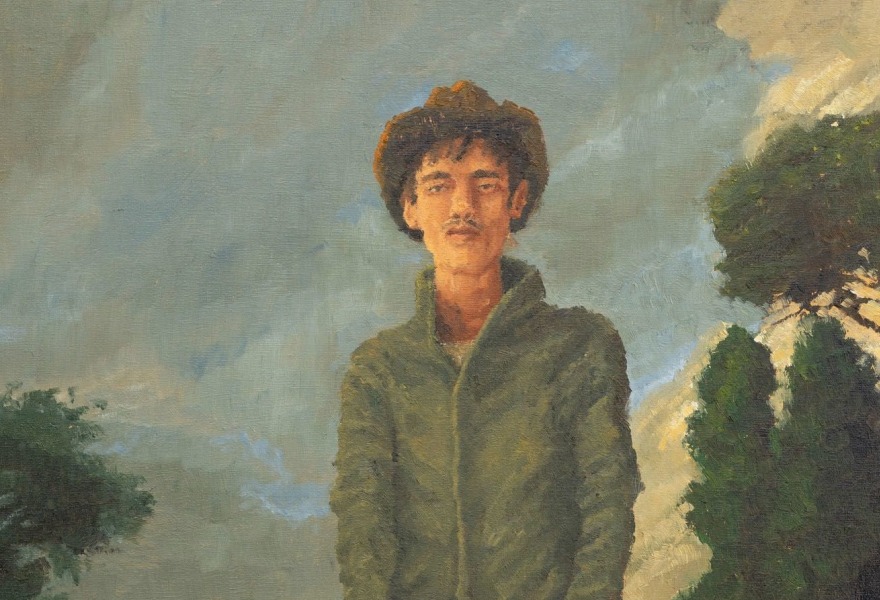21 december 2021, Flor Linckens
Felix De Clercq: “I collect stories: from millions of years ago and from last week.”
Until 9 January 2022, Gallery Sofie Van de Velde is showing a solo exhibition by the young Belgian artist Felix De Clercq. He’s only 24 years old, but that does not alter the fact that there is now a waiting list for his work. When Het Nieuwsblad newspaper headlined an article earlier this year with 'Antwerp Academy delivers one child prodigy after another', Felix De Clercq's name was certainly not absent from the list.
Felix De Clercq's figurative paintings have an autobiographical component, sometimes quite literally from his childhood diaries, but at the same time, they refer to our modern society and visual culture. As a result, his works sometimes appear nostalgic, with a touch of Romanticism, folklore or the Old Masters, but at the same time they are unmistakably universal and contemporary. This creates a certain tension between old and new, between historical fiction and contemporary truth — or vice versa.
His works are preceded by a lot of research; not only into art history, but also fields including paleontology, biology and history. For the 'Blackbird on a shoulder' exhibition at Gallery Sofie Van de Velde, he travels through time and back once more, but this time, the autobiographical component plays a less significant role in the works on display. The title of the exhibition refers to a story that begins with a historic excavation from 1840, where remains of the Iguanodon (a dinosaur species) were recovered. They were hidden from the Germans during the Second World War, but because the cellar in which they were stored was not watertight, their bones were still lost. The painter is fascinated by the ways in which people have historically collected objects.
De Clercq's imaginations function almost like a short story, sometimes inspired by the somewhat oppressive works by the Dutch writer Gerard Reve. His palette often consists of dark, earthy colours. He is known for his canvases in oil paint, but in the current exhibition at the gallery, you can see a number of objects and watercolours by his hand.
De Clercq studied painting at the Royal Academy of Fine Arts in Antwerp, where Sofie Van de Velde discovered his work. In De Morgen newspaper she says: “I was immediately captivated by the imagery of Felix. There is a restrained integrity in his works. The way he spoke about his art was so disarming, searching for the right words, on the way to the right balance, that I immediately felt a click that has remained to this day.” Although De Clercq's star rises quickly, he remains quite down to earth about it: “I don't want my work to revolve around my person. On the contrary, I prefer to disappear from work a bit.” In the NRC newspaper he added: "I collect stories, from millions of years ago and from last week."


